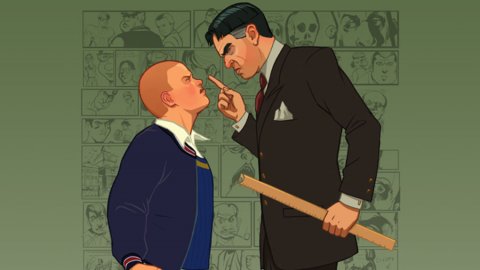
Bully
TeaserPlay, YouTube channel, has released a video dedicated to Bully, precisely a fan-made trailer in Unreal Engine 5 that imagines a remake of the Rockstar game for PC and consoles of the current generation. The video includes various environments and characters from the game.The video shows Bully's settings and character which, compared to the original PS2 game, are very detailed and pleasing to the eye, but obviously this is not a job perfect. Various imperfections are easily noticed, especially in the faces of the characters and in their animations. However, remember that this is a fan-made video, not the work of an AAA team.
It is a work that shows how it is possible to create more than discrete products using Epic Games technologies. This video was created using the Unreal Engine 5, as already mentioned, and precisely tools such as Lumen, Nanite and ray tracing. Additionally, TeaserPlay used Metahuman to create the faces of Jimmy Hopkins and Dr. Crabblesnitch.
Bully is one of Rockstar's most rumored games. There are regular rumors about a possible remake or sequel, but as of today we have never had anything concrete on our hands.
Tell us, would you like a remake of Bully, or would you prefer something completely new?
Source Have you noticed any errors?
The Best Way to Stop a Bully
If you’ve ever seen an old after-school special or caught a PSA in the past few years, you’ve probably gotten the message that bullying is a serious problem. For its victims, bullying fits into the range of “adverse childhood experiences,” and is identified as being dangerous to a young person’s future physical and emotional health. And children aren’t the only ones who suffer. A recent article in the journal Education (Piotrowski, 2022) pointed out several ways in which adults can be bullied at work: interpersonal mistreatment and harassment, destructive leadership, abusive supervision, and incivility. It’s not difficult to see the problem and to agree that bullying needs to be addressed wherever it crops up. But the best way to cut down on bullying might surprise you.
The simplest way to understand bullying suggests that being bullied causes children to grow up to become bullies themselves, and that suffering child abuse can create a predisposition toward abusing others. But bullying is not just an isolated, self-replicating behavior: according to a 2013 review article by Sharon Padgett and Charles Notar, published in the Universal Journal of Educational Research, it’s really a group process whose audience may play as significant a part as its perpetrator and its victim.
“Peer relationships,” Padgett and Notar say, “are like oxygen that allows bullying [to] breathe and spread.” Young people are quite heavily influenced by their peers; if these peers simply stand by as bullying takes place, their silence is often taken as encouragement. “With peers looking on and providing at least tacit support, the bully is no longer acting alone,” Padgett and Notar report. Bullies, they go on to say, enjoy the approval of an audience, and when they have an audience that does not intervene, their cruelty is reinforced.
In many of the aforementioned after-school specials, though, some heroic member of the school community steps in to stop the bully in a rallying, energizing moment. But in real life, bystander apathy, as Padgett and Notar call it, is all too common. They reported on a study suggesting that peers are present in up to 85 percent of episodes of bullying, but that they intervene in only about 10 percent. When interviewed and asked if they wished to intervene, about 80 percent of these bystanders said they found it unpleasant to watch the bullying and wished someone would step up to stop it; however, very few of them actually did so.
The truth is, it may be these bystanders — and the friends or colleagues of the victim — who can do the most to stop bullying. Many school-based anti-bullying programs place their primary emphasis on convincing onlookers to support anyone who becomes the target of bullying, rather than tacitly endorsing the behavior by saying nothing. One doesn’t need to confront a bully directly, either. Padgett and Notar reported on a 2011 study in Educational Leadership by Davis and Nixon concluding that bystanders don’t even need to stand up to bullies directly. Instead, they can connect with a bully’s victims afterward by contacting them individually to offer more subtle support.
And after an act of bullying takes place, the way bystanders talk about the incident in their social circles can also either contribute to or stop the process of victimization. When participants react negatively to the victim, that person may be seen by the social group as something like an outcast, whereas “[perceiving] the physical bullying victim in a positive light” can place them in the “in-group,” and can cut down on any ongoing victimization after the original incident, as Padgett and Notar indicate.
If you’ve seen the high school movies and after-school specials mentioned earlier, you’ve probably imagined yourself heroically standing up to a bully. It’s the right impulse, although as we’ve seen, it happens too rarely in the real world — among adults, that is. Children do better, according to Padgett and Notar. In one of the studies they reviewed, “Younger students and girls were more likely to report taking positive action than were older students and boys by directly intervening, helping the victim, or talking to an adult.”
If our kids know it’s the right thing to do, and we ourselves now know the power of bystander action in the face of bullying, there’s no excuse for failing to intervene. If you see an incident of bullying, don’t be an apathetic bystander; find some way to take supportive action and help put an end to it.